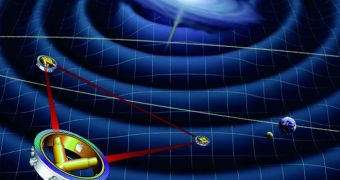An University of California in Santa Cruz (USCS) undergraduate student recently led a new investigation into the potential points of origins for gravitational waves. The group is now able to predict with some degree of accuracy where such events could be observed within the Local Group.
For example, the student says, a rich source of gravitational waves could be the merger of two neutron stars. When two such structures meet, they start to spiral around each other, until they finally collide.
Such events may be capable of producing detectable gravitational waves, that could be picked up via laser interferometry or other such detection methods, explains student Luke Zoltan Kelley.
He is the first author of a new paper detailing the findings, which will appear in the upcoming December 10 issue of the esteemed scientific publication Astrophysical Journal Letters.
The undergraduate worked together UCSC associate professor of astronomy and astrophysics Enrico Ramirez-Ruiz on the new discoveries, SpaceRef reports.
In addition to setting a theoretical framework for identifying gravitational wave sources, the team also developed a method of identifying where neutron stars mergers are likely to happen within the Local Group of galaxies.
“This is a very important result, as it is likely to significantly alter how gravitational-wave observatories currently operate,” Ramirez-Ruiz explains, saying that this study could have significant implications on ongoing detection efforts.
Detectors such as the Laser Interferometry Gravitational-Wave Observatory (LIGO), in Louisiana and Washington, could start using the new approach to identifying wave sources, rather than continuously scanning the skies, waiting to get lucky.
According to Albert Einstein, gravitational waves can best be described as ripples in space-time, which develop when massive bodies with intense gravitational pull move through space. Neutron stars are definitely such objects.
These celestial bodies are essentially the collapsed cores of massive stars, and they exert tremendous gravity in their surroundings. Arguably, only black holes are denser and heavier than neutron stars.
What the new work proposes is that astrophysicists could begin looking for wave sources in compact binaries, which are apparently among the best candidates for releasing observable gravitational waves.
These binary systems can consists of two neutron stars, two black holes, or one neutron star and one black hole, orbiting each other.
“Detecting the optical counterparts of gravitational-wave detections will be a lot easier if they are not within galaxies,” Ramirez-Ruiz concludes.

 14 DAY TRIAL //
14 DAY TRIAL //